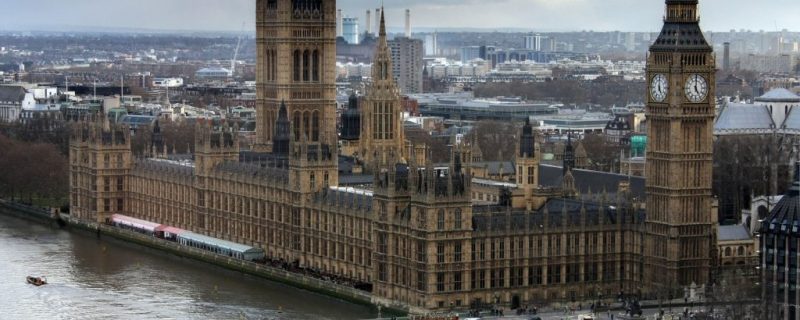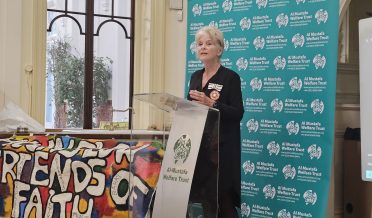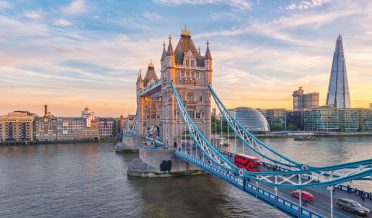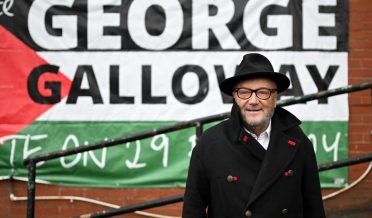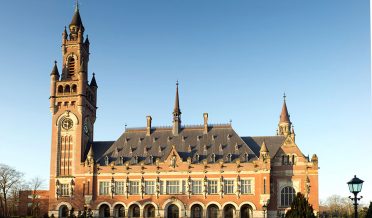How democracy and UK Parliament works
Abdulrazzaq Sajid
Basically “The mother of parliaments” is a phrase coined by the British politician and reformer John Bright in a speech at Birmingham on 18 January 1865. It was a reference to England. His actual words were: “England is the mother of parliaments”. Since then, The British Parliament, often referred to as the “Mother of Parliaments,” consists of the sovereign, the House of Lords, and the House of Commons. The UK parliament is made up of the House of Commons and the House of Lords. Members of the Commons are elected using the First Past the Post voting system. Members of the Lords are unelected.
The United Kingdom (UK) is a democracy. A democracy is a country where the people choose their government. In the UK there are too many people to ask and too many decisions to take, therefore representatives are elected to make decisions. Representatives include Members of Parliament (MPs), Members of the Scottish Parliament (MSPs) (representing the population living in Scotland) and local councillors. The UK Parliament meets in Westminster, London. It has two parts – the House of Commons and the House of Lords, plus the monarchy. The House of Commons is made up of 650 MPs and the House of Lords of around 810 Lords or, as they are sometimes known, peers. Members of Parliament (MPs) are elected every five years at a General Election. For the purposes of the General Election, the country is divided into 650 constituencies or areas. Each constituency elects one MP to Parliament. The last General Election in the UK was held on Thursday 8th June 2017. At the 2017 General Election Scotland returned 59 MPs. 35 of the 59 MPs elected were from the Scottish National Party (SNP). 13 Conservative, 7 Labour and 4 Liberal Democrat MPs were also elected. One role of MPs in the UK Parliament is to represent their constituents in areas where the UK Parliament takes decisions eg immigration or defence. MPs either debate or ask questions in the House of Commons or they work in smaller groups known as committees. Other important roles of MPs in Parliament are to help make laws and to scrutinise (check-up on) the work of the government or investigate issues.

House of Lords
The House of Lords is the second chamber of the UK Parliament. The role of the House of Lords is to help make laws as well as check-on the work of government and investigate issues. Most peers have been appointed by the Queen on the advice of a prime minister in recognition of their expertise in a particular area eg business, law or science. Others are Church of England bishops and 92 are hereditary peers or people with titles (such as Barons or Viscounts) who have inherited the right to sit in the Lords.
The Monarchy
The House of Lords is where Her Majesty reads the Queens Speech every year, but the speech is written for her by the Prime Minister. The UK’s political system can be described as a constitutional monarchy with a king or queen as Head of State. However, it is the Houses of Parliament that make our laws, not the monarch. The monarch only formally passes legislation – this is known as Royal Assent. When a parliamentary Bill is given Royal Assent it becomes an Act of Parliament. It is then up to the relevant government department to implement that law. For example, the Transport department will deal with new Acts relating to transport. The monarch must remain politically neutral and does not interfere with the legislative process. No monarch has refused Parliament’s wishes for over 300 years. Constitutionally, the UK Government is his/her Majesty’s Government.
Every year the monarch goes to the House of Lords to open a new session of Parliament. The monarch reads ‘The Queen’s Speech’ which announces what the government plans to do in the coming year. It is written by the Prime Minister.

Big ben story
Big Ben, tower clock, famous for its accuracy and for its massive bell. The tower itself was formally known as St. Stephen’s Tower until 2012, when it was renamed Elizabeth Tower on Elizabeth II’s Diamond Jubilee, celebrating 60 years on the British throne.
The tower was designed by Augustus Pugin in a neo-Gothic style. When completed in 1859, its clock was the largest and most accurate four-faced striking and chiming clock in the world.[3] The tower stands 316 feet (96 m) tall, and the climb from ground level to the belfry is 334 steps. Its base is square, measuring 40 feet (12 m) on each side. Dials of the clock are 22.5 feet (6.9 m) in diameter. All four nations of the UK are represented on the tower in shields featuring a rose for England, thistle for Scotland, shamrock for Northern Ireland, and leek for Wales. On 31 May 2009, celebrations were held to mark the tower’s 150th anniversary.
Big Ben is the largest of the tower’s five bells and weighs 13.5 long tons (13.7 tonnes; 15.1 short tons). It was the largest bell in the United Kingdom for 23 years. The origin of the bell’s nickname is open to question; it may be named after Sir Benjamin Hall, who oversaw its installation, or heavyweight boxing champion Benjamin Caunt. Four quarter bells chime at 15, 30 and 45 minutes past the hour and just before Big Ben tolls on the hour. The clock uses its original Victorian mechanism, but an electric motor can be used as a backup. The tower is a British cultural icon recognised all over the world. It is one of the most prominent symbols of the United Kingdom and parliamentary democracy, and it is often used in the establishing shot of films set in London.[6] The clock tower has been part of a Grade I listed building since 1970 and a UNESCO World Heritage Site since 1987.
On 21 August 2017, a four-year schedule of renovation works began on the tower. Modifications will include adding a lift, re-glazing and repainting the clock dials, upgrading lighting and repairing roof tiles among other improvements. With a few exceptions, such as New Year’s Eve and Remembrance Sunday, the bells are to be silent until the work is completed in 2022.

Origin
Elizabeth Tower, originally referred to as the Clock Tower, but more popularly known as Big Ben, was raised as a part of Charles Barry’s design for a new Palace of Westminster, after the old palace was largely destroyed by fire on 16 October 1834. Although Barry was the chief architect of the neo-gothic palace, he turned to Augustus Pugin for the design of the Clock Tower, which resembles earlier Pugin designs, including one for Scarisbrick Hall in Lancashire. Construction of the tower began on 28 September 1845.
Design
Completed in 1859, the tower is designed in Pugin’s celebrated Gothic Revival style and is 316 feet (96.3 m) high. Its dials (at the centre) are 180 feet (54.9 m) above ground level. The tower’s base is square, measuring 40 feet (12.2 m) on each side, resting on concrete foundations 12 feet (3.7 m) thick. It was constructed using bricks clad on the exterior with sand coloured Anston limestone from South Yorkshire, topped by a spire covered in hundreds of cast-iron rooftiles. There is a spiral staircase with 290 stone steps up to the clock room, followed by 44 to reach the belfry, and an additional 59 to the top of the spire.
Above the belfry and Ayrton light are 52 shields decorated with national emblems of the four countries of the UK: the red and white rose of England’s Tudor dynasty, the thistle of Scotland, shamrock of Northern Ireland, and leek of Wales. They also feature the pomegranate of Catherine of Aragon, first wife of the Tudor king Henry VIII; the portcullis, symbolising both Houses of Parliament; and fleurs-de-lis, a legacy from when English monarchs claimed to rule France.
Its foundations rest on a layer of gravel, below which is London clay. Owing to this soft ground, the tower leans slightly to the north-west by roughly 230 mm (9.1 in) over 55 m height, giving an inclination of approximately 1⁄240. This includes a planned maximum of 22 mm increased tilt due to tunnelling for the Jubilee line extension. In the 1990s, thousands of tons of concrete were pumped into the ground underneath the tower to stabilise it during construction of the Westminster section of the Jubilee line. It leans by about 20 inches at the finial. Experts believe the tower’s lean will not be a problem for another 4,000 to 10,000 years.

The Palace of Westminster, Big Ben, and Westminster Bridge
Journalists during Queen Victoria’s reign called it St Stephen’s Tower. As members of Parliament originally sat at St Stephen’s Hall, these journalists referred to anything related to the House of Commons as “news from St Stephens” (the Palace does contain a feature called St Stephen’s Tower, located above the public entrance). On 2 June 2012, the House of Commons voted in support of a proposal to change the name from Clock Tower to Elizabeth Tower in tribute to Elizabeth II, Queen of the United Kingdom, in her diamond jubilee year, since the large west tower now known as Victoria Tower had been renamed in tribute to Queen Victoria on her diamond jubilee. On 26 June 2012, the House of Commons confirmed that the name change could go ahead. David Cameron, then Prime Minister, officially announced the change of name on 12 September 2012. The change was marked by a naming ceremony in which John Bercow, then Speaker of the House of Commons, unveiled a plaque attached to the tower on the adjoining Speaker’s Green.
Prison Room
Inside the tower is an oak-panelled Prison Room, which can only be accessed from the House of Commons, not via the tower entrance. It was last used in 1880 when atheist Charles Bradlaugh, newly elected Member of Parliament for Northampton, was imprisoned by the Serjeant at Arms after he protested swearing a religious oath of allegiance to Queen Victoria. Officially, the Serjeant at Arms can still make arrests, as they have had the authority to do since 1415. The room, however, is currently occupied by the Petitions Committee, which oversees petitions submitted to Parliament.
Ayrton Light
A new feature was added in 1873 by Acton Smee Ayrton, then First Commissioner of Works and Public Buildings. The Ayrton Light is a lantern sited above the belfry and is lit whenever the House of Commons sits after dark. It can be seen from across London. Originally, it shone towards Buckingham Palace so Queen Victoria could look out of a window and see when the Commons were at work.
Clock dial
Augustus Pugin drew inspiration from Benjamin Lewis Vulliamy when he designed the dials. Each is made of cast iron sections bolted together. The whole frame is 22.5 feet (6.9 m) in diameter and contains 324 pieces of opalescent glass.[31] Originally, the dials were backlit using gas lamps, at first only when Parliament was sitting, but they have routinely been illuminated from dusk until dawn since 1876. Electric bulbs were installed at the beginning of the 20th century.
When completed, the frame and hands were Prussian blue, but were painted black in the 1930s to disguise the effects of air pollution. The original colour scheme was revived during the 2017–2021 conservation work. It was found that no less than six different colour schemes were used over the past 160 years.
The rear of the clock face
The clock’s movement is famous for its reliability. The designers were the lawyer and amateur horologist Edmund Beckett Denison, and George Airy, the Astronomer Royal. Construction was entrusted to clockmaker Edward John Dent; after his death in 1853 his stepson Frederick Dent completed the work, in 1854.
Winding the clock mechanism
On top of the pendulum is a small stack of old penny coins; these are to adjust the time of the clock. Adding a coin has the effect of minutely lifting the position of the pendulum’s centre of mass, reducing the effective length of the pendulum rod and hence increasing the rate at which the pendulum swings. Adding or removing a penny will change the clock’s speed by 0.4 seconds per day. The Keeper of the Clock is responsible for looking after the movement in addition to overseeing every aspect of maintenance around the Palace. A team of horologists are on call 24 hours a day to attend to the clock in the event of an emergency.

